Full text
PDF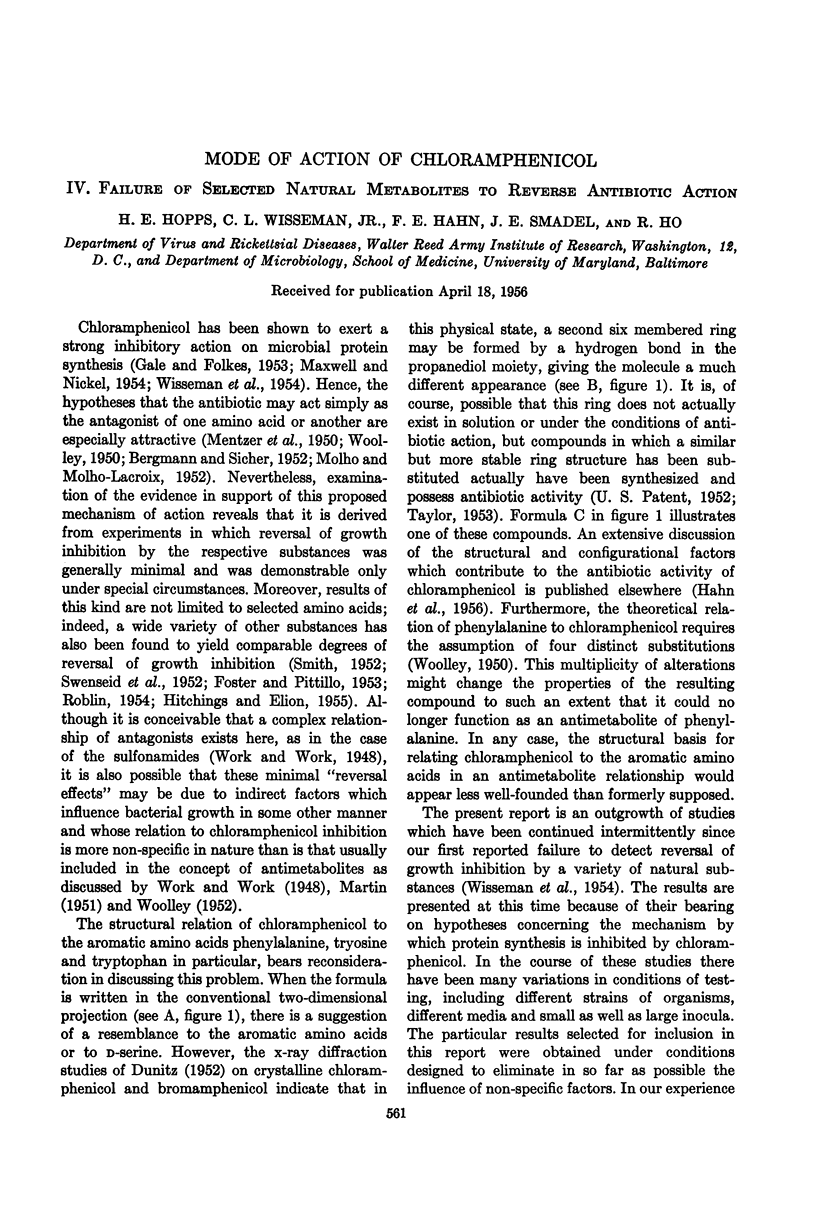
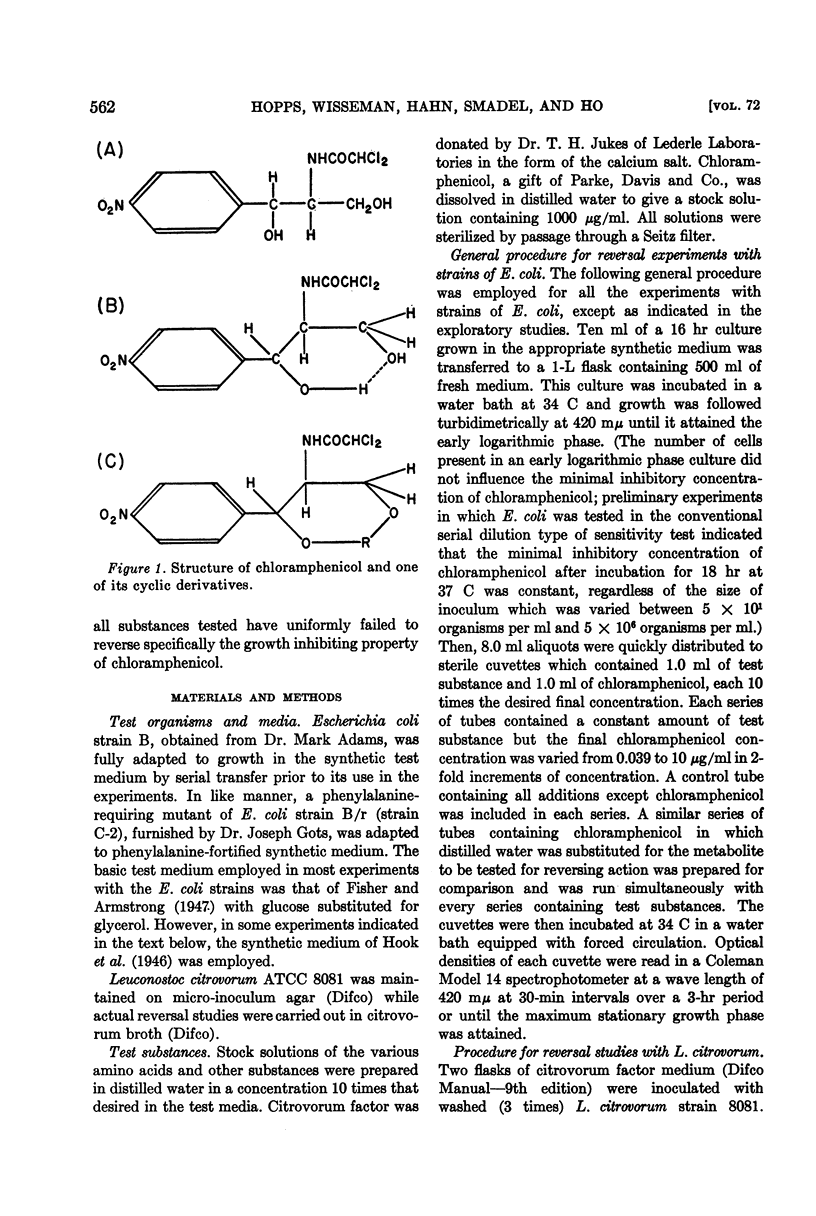
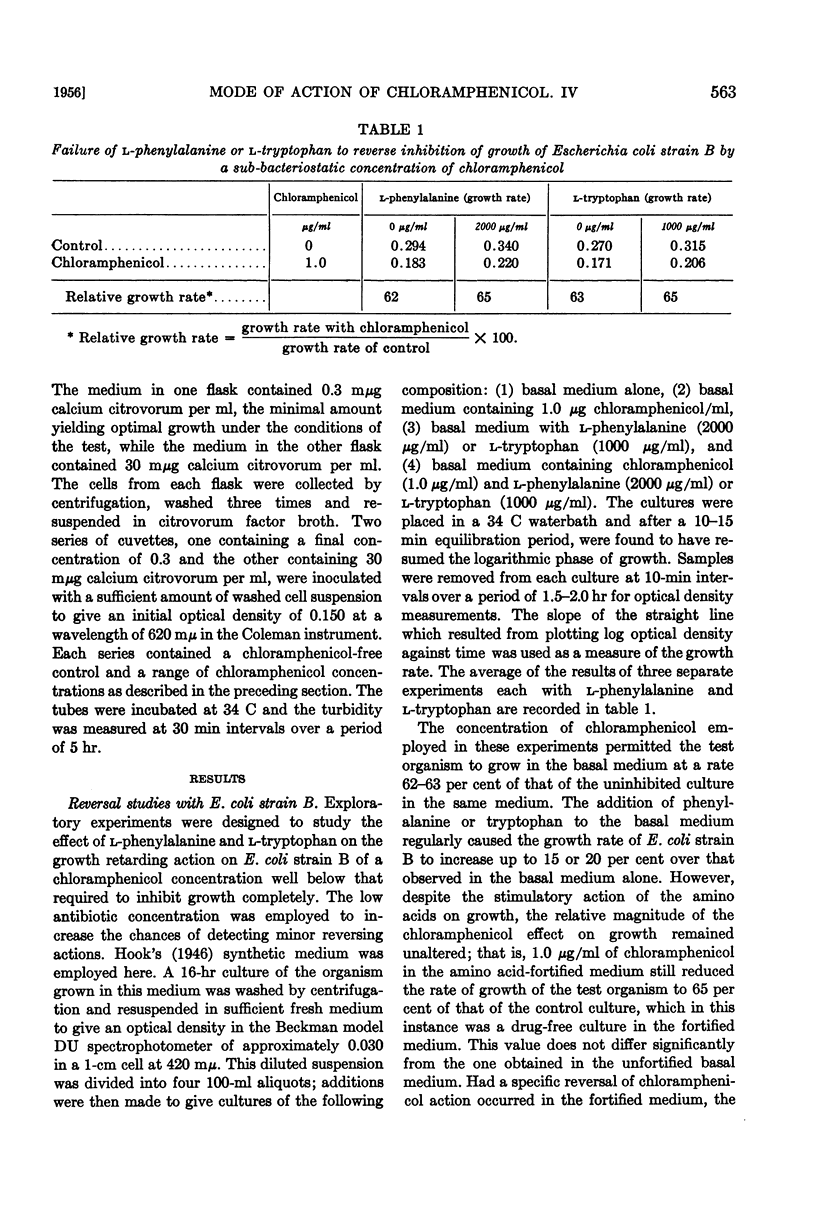
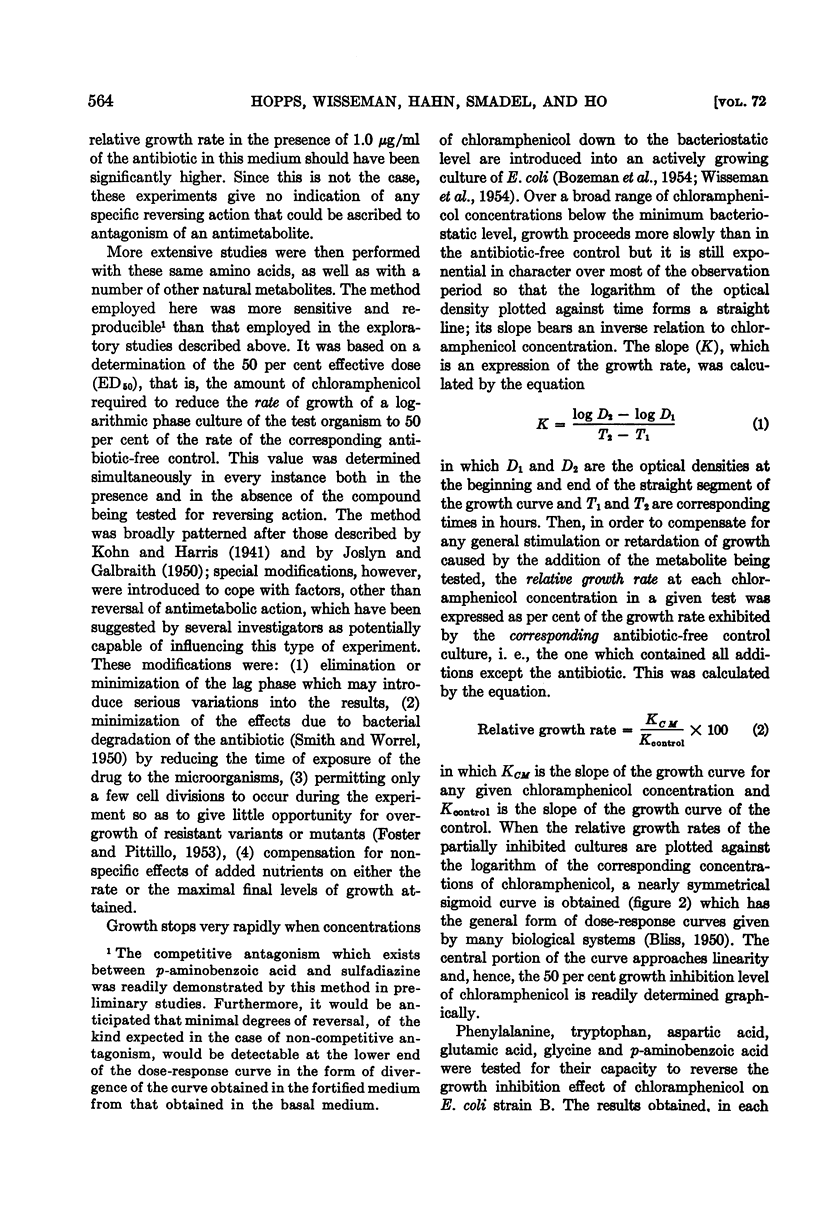
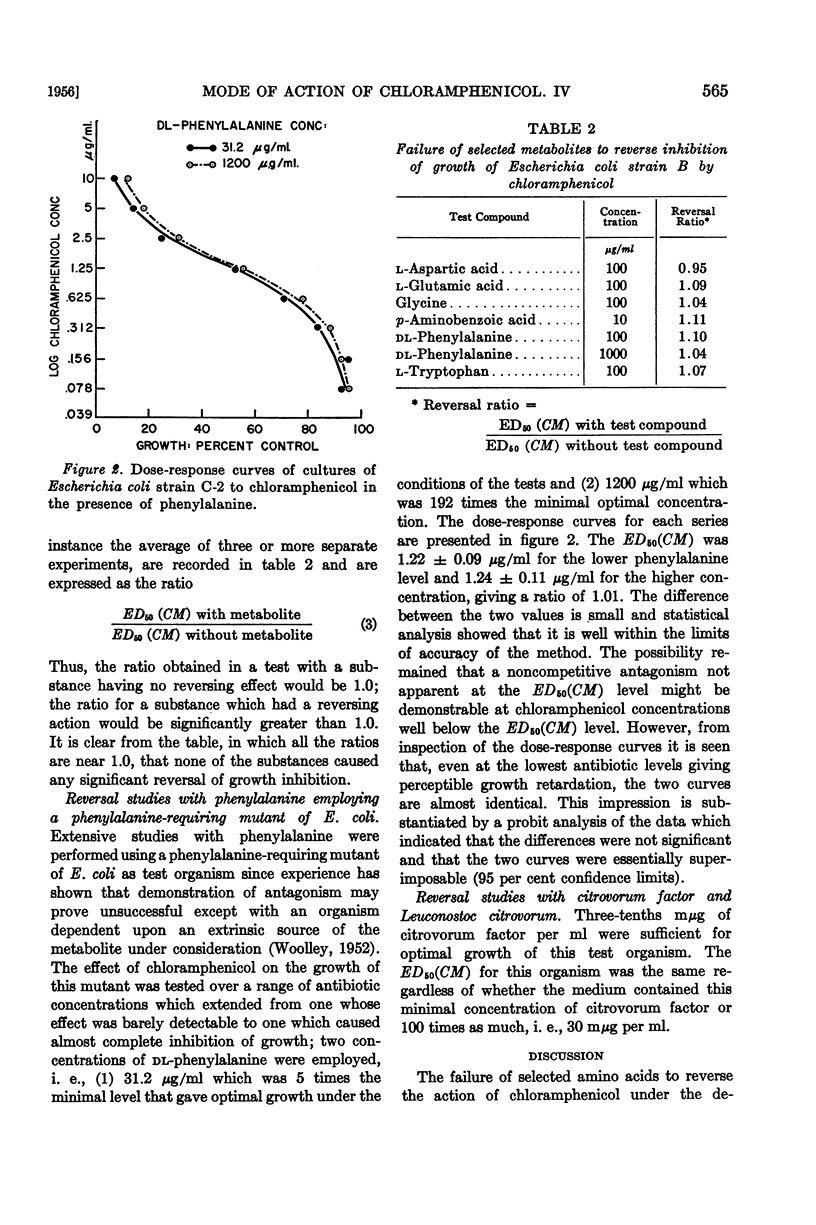
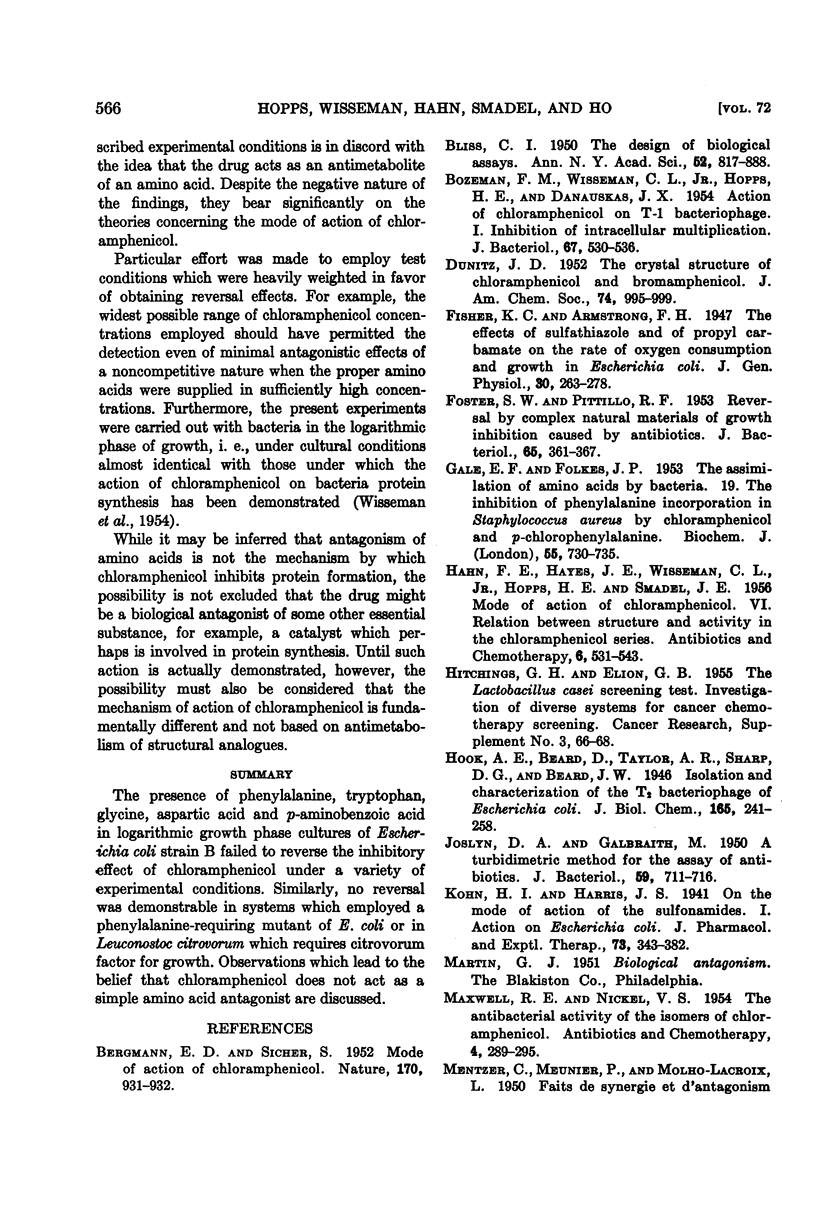
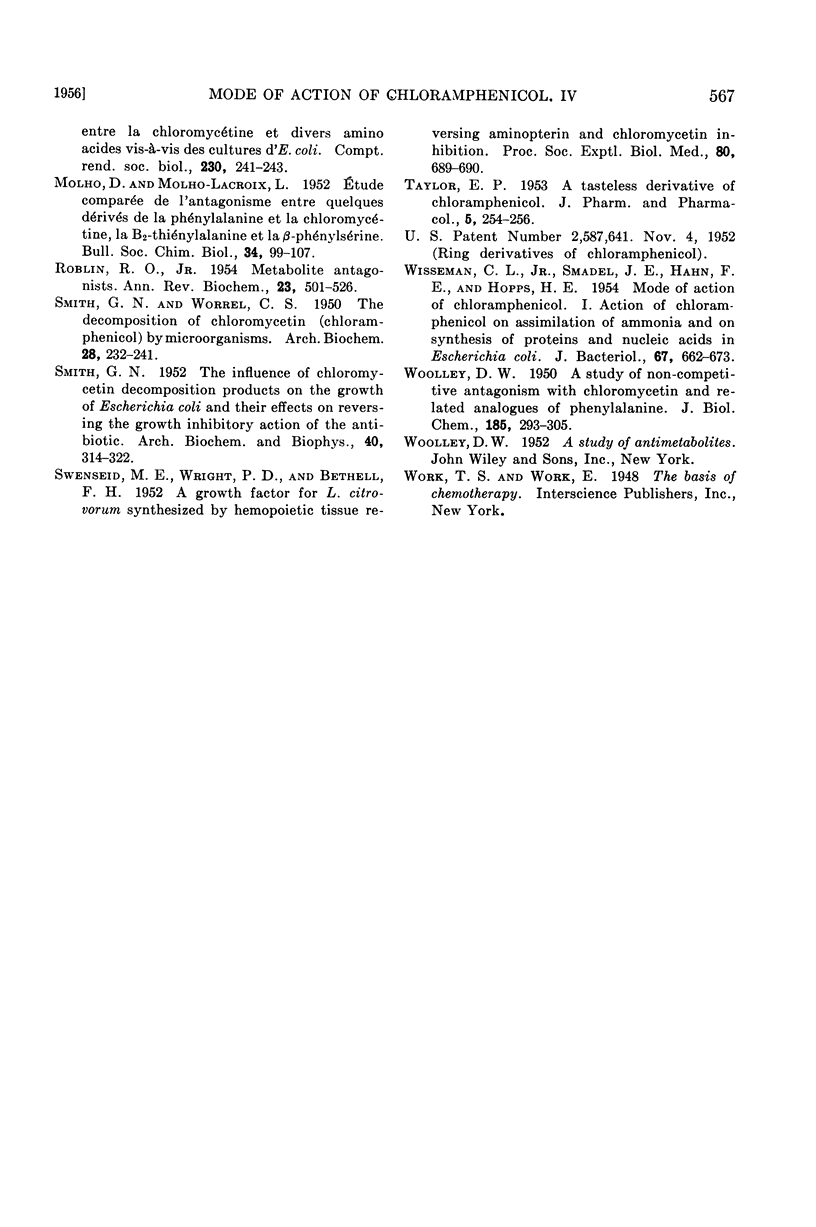
Selected References
These references are in PubMed. This may not be the complete list of references from this article.
- BERGMANN E. D., SICHER S. Mode of action of chloramphenicol. Nature. 1952 Nov 29;170(4335):931–932. doi: 10.1038/170931a0. [DOI] [PubMed] [Google Scholar]
- BOZEMAN F. M., WISSEMAN C. L., Jr, HOPPS H. E., DANAUSKAS J. X. Action of chloramphenicol on T-1 bacteriophage. I. Inhibition of intracellular multiplication. J Bacteriol. 1954 May;67(5):530–536. doi: 10.1128/jb.67.5.530-536.1954. [DOI] [PMC free article] [PubMed] [Google Scholar]
- FOSTER J. W., PITTILLO R. F. Reversal by complex natural materials of growth inhibition caused by antibiotics. J Bacteriol. 1953 Apr;65(4):361–367. doi: 10.1128/jb.65.4.361-367.1953. [DOI] [PMC free article] [PubMed] [Google Scholar]
- GALE E. F., FOLKES J. P. The assimilation of amino acids by bacteria. 19. The inhibition of phenylalanine incorporation in Staphylococcus aureus by chloramphenicol and p-chlorophenylalanine. Biochem J. 1953 Dec;55(5):730–735. doi: 10.1042/bj0550730. [DOI] [PMC free article] [PubMed] [Google Scholar]
- HITCHINGS G. H., ELION G. B. The lactobacillus casei screening test. Cancer Res. 1955;Suppl. 3:66–68. [PubMed] [Google Scholar]
- JOSLYN D. A., GALBRAITH M. A turbidimetric method for the assay of antibiotics. J Bacteriol. 1950 Jun;59(6):711–716. doi: 10.1128/jb.59.6.711-716.1950. [DOI] [PMC free article] [PubMed] [Google Scholar]
- MOLHO D., MOLHO-LACROIX L. Etude comparée de l'antagonisme entre quelques dérivés de la phénylalanine et la chloromycétine, la beta 2 thiénylalanine et la beta phénylsérine. Bull Soc Chim Biol (Paris) 1952 Jan-Feb;34(1-2):99–107. [PubMed] [Google Scholar]
- ROBLIN R. O., Jr Metabolite antagonists. Annu Rev Biochem. 1954;23:501–526. doi: 10.1146/annurev.bi.23.070154.002441. [DOI] [PubMed] [Google Scholar]
- SMITH G. N. The influence of chloromycetin decomposition products on the growth of Escherichia coli and their effects on reversing the growth-inhibiting action of the antibiotic. Arch Biochem Biophys. 1952 Oct;40(2):314–322. doi: 10.1016/0003-9861(52)90117-3. [DOI] [PubMed] [Google Scholar]
- SMITH G. N., WORREL C. S. The decomposition of chloromycetin (chloramphenicol) by microorganisms. Arch Biochem. 1950 Sep;28(2):232–241. [PubMed] [Google Scholar]
- SWENDSEID M. E., WRIGHT P. D., BETHELL F. H. A growth factor for L. citrovorum synthesized by hemopoietic tissue reversing aminopterin and chloromycetin inhibition. Proc Soc Exp Biol Med. 1952 Aug-Sep;80(4):689–690. doi: 10.3181/00379727-80-19732. [DOI] [PubMed] [Google Scholar]
- TAYLOR E. P. A tasteless derivative of chloramphenicol. J Pharm Pharmacol. 1953 Apr;5(4):254–256. doi: 10.1111/j.2042-7158.1953.tb13984.x. [DOI] [PubMed] [Google Scholar]
- WISSEMAN C. L., Jr, SMADEL J. E., HAHN F. E., HOPPS H. E. Mode of action of chloramphenicol. I. Action of chloramphenicol on assimilation of ammonia and on synthesis of proteins and nucleic acids in Escherichia coli. J Bacteriol. 1954 Jun;67(6):662–673. doi: 10.1128/jb.67.6.662-673.1954. [DOI] [PMC free article] [PubMed] [Google Scholar]
- WOOLLEY D. W. A study of non-competitive antagonism with chloromycetin and related analogues of phenylalanine. J Biol Chem. 1950 Jul;185(1):293–305. [PubMed] [Google Scholar]


